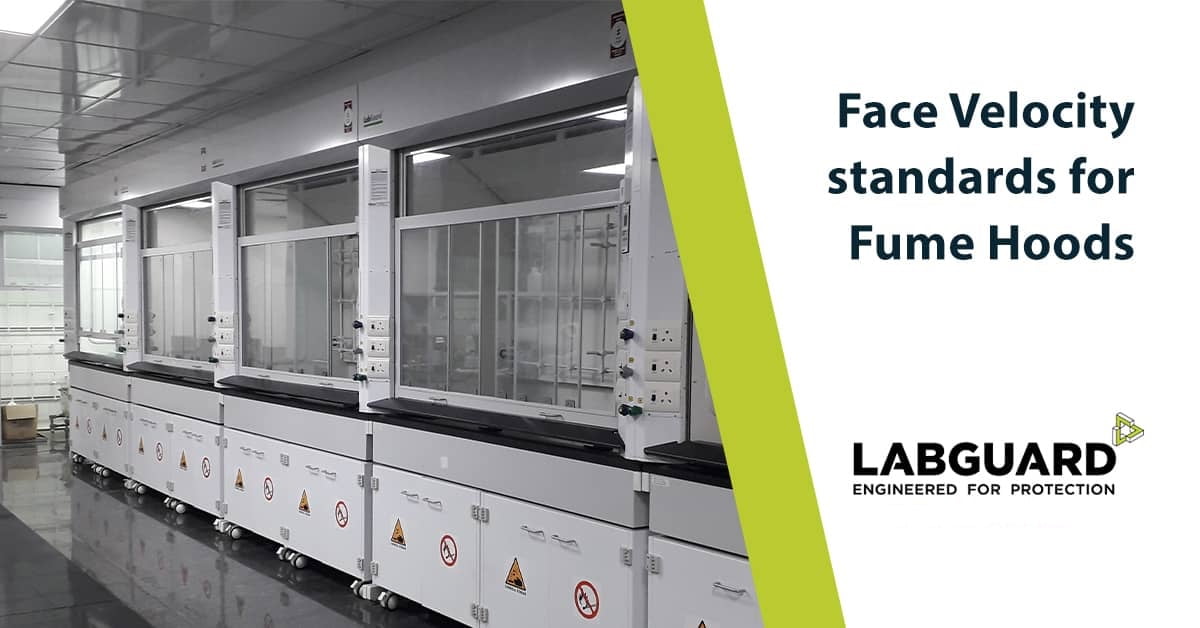A fume hood works by drawing the air past the user, into the fume hood, fumes contained inside as the experiment is on-going, and exhausting the contaminated air safely outside the facility.
Obviously, the air velocity must be sufficient enough to serve this purpose. Also, neither the fume hood nor the exhaust system, should leak contaminated air back into the lab. We often come across a term called face velocity. This is the single most important term in fume hood technology which must be well understood.
What is Face Velocity? simply put it is the velocity of the air that is sucked into the fume hood from around the user breathing zone. It is measured across the face or plane of the opening of the fume hood. If a certain volume of air per unit time is being sucked across open area of the fume hood, the velocity (face velocity) will depend on this area. Higher the area of opening, the lesser will be the face velocity. That means when the Sash is fully opened it is the least, and when the Sash is fully closed it is the maximum. When the Sash is fully closed the aerofoil at the table edge of the fume hood provides the opening for the air to rush in.
Less than required face velocity would mean that the contaminants might not enter into or leak out of the fume hood. On the other hand, too high a face velocity could result into turbulence inside the fume hood causing leakage of the contaminants. Therefore, it is important to arrive at a standardized face velocity which is close to the ideal.
To set up the experiment, the Sash could be fully open, while the experiment is on it could be at the safe working height, and at times it could be even fully closed.
In order to standardize the face velocity, it is measured across the opening when the Sash is open at 18 inches, which is called safe working height (or, the design height). At this height, the measurement across the opening, at designated points on the plane, must average in the range of 80 to 100 feet per min. (0.41 meter/sec to 0.51m/sec). This standardized face velocity is expected to ensure adequate containment by most fume hoods which are designed and built as per standards.
There is always an airflow monitor on the fume hood indicating the face velocity in real time. If it goes out of range, there is an audio-visual alarm and corrective action like closing the Sash must be taken.
| Standard | Face Velocity | |
| India | IS 4209:2013 | 0.5 m/s |
| International | ASHRAE110-1995 | 80-120 fpm (0.4-0.6m/s) |
| US | ANSI/AIHA Z9.5-2003 | 80-100 fpm (0.4-0.5m/s) |
| International | SEFA 1.2-2002 | 80-120 fpm (0.4-0.6m/s) |
| Europe | EN14175 | Doesn’t specify |


